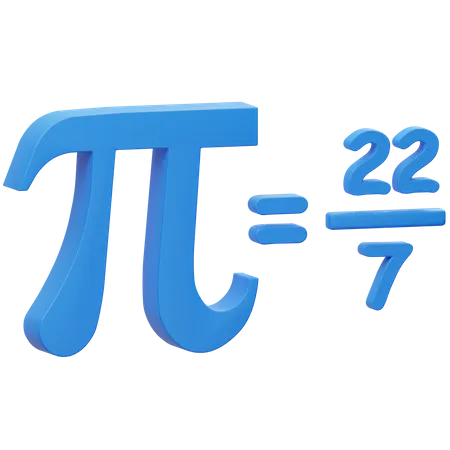
For thousands of years, people have studied and utilized the mathematical constant pi123, which is symbolized by the Greek letter π. It is defined as the circumference divided by the diameter of a circle, and its approximate value is 3.14159. Nonetheless, because of its special characteristics and endless nature, this number has captivated mathematicians throughout history.
Pi’s irrationality—the inability to be stated as a terminating decimal or as a fraction of two integers—makes it an intriguing number. Rather, it has a representation in decimals that is endless and devoid of any pattern repetition. Because of this, we are only able to approximate the value of pi with finite numbers, making it hard to write down exactly.
Since 3.14 is the first three digits of pi, March 14th, also known as 3/14, is celebrated globally as Pi Day, complete with math-themed events and baked goods like pies! But although though pi can only have three digits in daily life, scientists have used cutting-edge computing technology to calculate over billions of digits for pi.
The fact that pi can be found all across the natural world is another fascinating feature about it. In geometry, it manifests itself, for example, while calculating the areas and angles of circles or spherical objects like planets or stars. It is also essential for computing volumes and other complicated structures in calculus.
Pi appears in physics, engineering, statistics, music, and other domains besides math applications! The 1+1+ Fibonacci sequence
History and origins of pi123
Ancient societies have studied and applied the notion of pi for thousands of years. The first known approximation of pi dates from 1650 BCE, when the ancient Egyptians utilized a figure of 3.16 in their computations. However, the Greek mathematician Archimedes didn’t realize its entire worth until much later in history.
Indian mathematicians first used a sign to denote the ratio of a circle’s circumference to diameter in the eighth century CE. Later, Islamic scholars took up this sign and brought it to Europe in the Middle Ages, where it was finally called “pi.”Archimedes performed the first precise calculation of pi in the 3rd century BCE. He moved in close.
Using polygons that were both scribed and circumscribed around a circle to estimate its diameter, he took a geometric method to solving this challenge. He was able to determine pi more precisely by making these polygons have more sides.
Chinese mathematician Zu Chongzhi used an algorithm based on Archimedes’ method to compute pi to seven decimal places in the fifth century CE. Later, in the fourteenth century CE, the Indian mathematician Madhava refined this technique by computing pi to eleven decimal places.
How is pi123 calculated?
A mathematical constant known as pi, or π, denotes the relationship between a circle’s circumference and diameter. Mathematicians have been enthralled by this infinite number for ages, and research and investigation into it are still ongoing.
Known by several names, including Archimedes’ approach, the geometric method is the most popular way to compute pi. Using this technique, a regular polygon is inscribed inside a circle, and the polygon’s number of sides is increased until it almost blends in with the circle. One may determine pi by approximating the circumference of the circle by measuring the perimeter of the polygons.
However, using this procedure by hand can be quite laborious and time-consuming. That’s where technology and contemporary methods are useful.
A particular algorithm known as “pi123” was created in 1986 by physicist Daisuke Takahashi. It makes use of Machin-like formulae, a type of series expansion formula that expresses pi as an infinite sum or product of smaller integers. Three distinct pairs of digits (1-3, 2-4, and 3-5) are represented by the letter “123” in pi123 and are utilized in these calculations.
Applications of pi123 in different fields
Mathematicians, physicists, and engineers have been fascinated by the irrational number Pi123 for ages. It is an essential constant in many equations and computations because of its numerous uses in a wide range of areas. This section will go over some of the main applications for pi123 and how progress in these sectors depends on its value.
Mathematics
Without a doubt, pi123 is essential to mathematics. One of the most significant mathematical constants, it may be found in many geometric formulae, including those for surface area, volume, area, and circumference of spheres and circles. Trigonometric equations involving the sine, cosine, and tangent functions also contain their values. Many of these equations would be incomplete or perhaps impossible to answer correctly in the absence of pi123.
Physics
When we examine the realm of physics, the use of pi123 becomes more clear. Waveforms, oscillations, energy transfer calculations, and other physical phenomena are some of the ways that pi123 is manifested in physical phenomena, ranging from Newton’s law of gravity to Einstein’s theory of relativity. As an illustration, because pi123 appears in the formula for angular velocity, it is important to know how to calculate the frequency and wavelength of periodic waves.
Engineering
In order to create machines and structures that can endure real-world situations, engineers significantly rely on precise calculations. When dealing with rotational motion and circular constructions like wheels or flywheels, Pi123 comes into play. When calculating the stress and strain on curved beams, its value is particularly crucial.
Advantages of using pi123
Precise Calculations
Employing Pi123 ensures precision to a million decimal places, an accomplishment that is challenging for human computations to accomplish without inaccuracy. It gets rid of human mistakes that might occur when computing pi manually, including typos or rounding errors.
Time-Efficient
Time is a crucial resource in today’s fast-paced world, so utilizing Pi123 may save time by producing hundreds or even millions of numbers quickly and without the need for laborious operations like manually writing them down.
Availability
Since Pi123 is an online application, anybody with an internet connection can use it at any time and from any location.
In Conclusion
Pi123 shines as a light in the field of mathematics, showing the way to accuracy and discovery. With unmatched ease, Pi123 allows you to study the infinite decimals of pi as a student, teacher, or passionate math lover. Accept the beauty of numbers and use Pi123 as a guide to explore the vast world of mathematical mysteries.
Most Asked Questions
For what purpose is pi used?
Pi has use in a wide range of mathematical and scientific fields. It is mostly used in geometry to indicate the ratio of the circumference to the diameter of a circle. Pi also shows up in a lot of mathematical formulae from many fields of mathematics, physics, and engineering.
To put it simply, what is pi?
To put it simply, pi is the number that expresses the relationship between the diameter and circumference of a circle. This number, which is irrational and roughly equivalent to 3.14159, has an infinite decimal form that never ends.
Is the value of pi real?
Pi is a real number, yes. It is an irrational number, precisely, and a mathematical constant. Its decimal form is non-terminating and non-repeating when it is irrational.
What’s the ratio of pi?
The connection between a circle’s diameter and circumference is known as the pi ratio. The Greek letter π (pi) is used to represent it mathematically, and its approximate value is 3.14159. One basic constant that is widely employed in geometry and other mathematical computations involving circles is the pi ratio.







